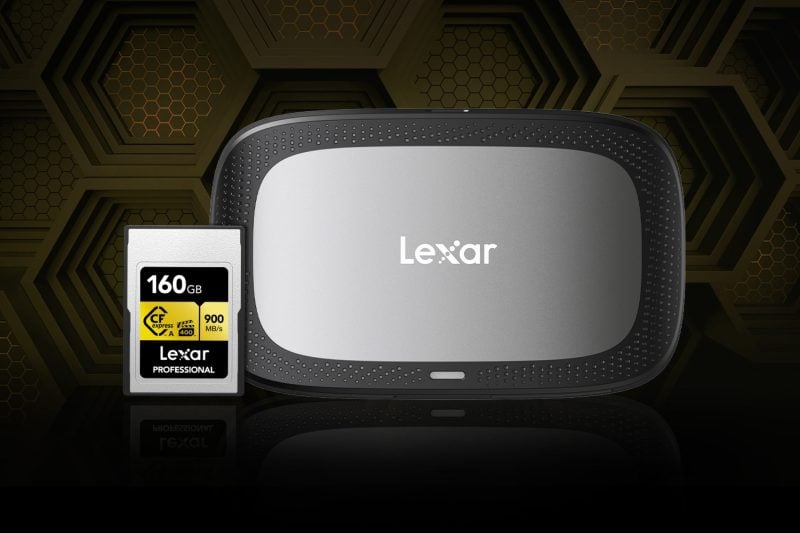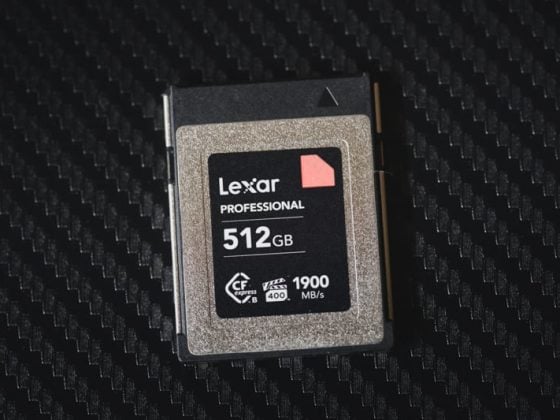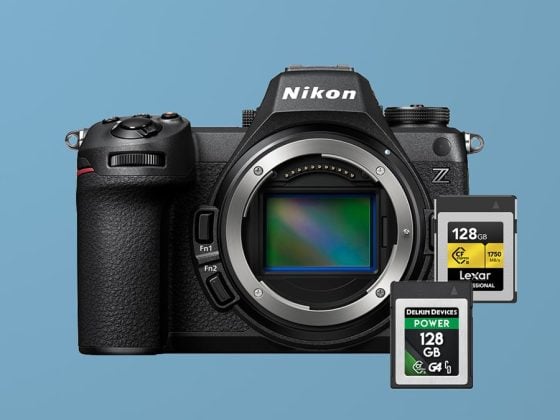2022 has been a great year for photographers looking for newer and faster memory cards for their cameras, and Lexar in particular has continued to ship some of the best cards out there.
So far we’ve had the CFexpress type B Diamond card, the fastest CFexpress Type B card to date, a new midrange 512GB 1800X UHS-II Gold card which is great value for videographers and currently the fastest V60 card that I’ve tested, and now this new CFexpress Type A card which is yet another of the fastest card in its class.
With all the new competition out there, it looks like Lexar has been taking it all very seriously and really showing their 25+ years of experience. All fantastic news for us consumers as this new CFexpress space has been quite a mess these last few years and it’s nice that finally one brand is standing out and doing everything right.
Note: Lexar, as well as some other brands, do send me samples of their products from time to time, and they were very prompt at sending me this new CFexpress Type A card so I could benchmark it in the Sony A7IV. This is very helpful so thank you Lexar!
Highlighted Features – Lifetime warranty, currently the fastest card, VPG 400 certified, 800MB/s write speed with a 700MB/s minimum sustained.
Lexar CFexpress Type-A – Amazon / Adorama / B&H
Is the Lexar CFexpress Type A really the fastest?
So far for the new Lexar CFx A card, I was only able to benchmark the Sony A7IV and saw great performance hitting the speed limit of what that camera can output.
For USB-C 3.2 tests I run the cards through the AJA System Test to get an idea of how they perform with real video codecs. I use 5120×2700 5k Red for the resolution, 16bit RGBA for the Codec Type, and anywhere between 4GB to 64GB depending on if I’m running to card for speed, or for heat load.
While usually the top brands often make cards that are all very close in performance, the speed test with the new Lexar CFx A card shows quite an improvement over the competition.
Here we see a write speed of 825MB/s and a read speed of 886Mb/s. The closest card was the Prograde card running at a write speed of 691MB/s, so that’s quite a nice improvement from Lexar.
| Memory Cards | Speed Class | Rated Write | Rated Read | Rated Sustained | Links | |||||
|---|---|---|---|---|---|---|---|---|---|---|
| CFast | ||||||||||
| Lexar Professional 3500x 256GB | CFast | 445 | 525 | B&H | ||||||
| Sandisk Extreme Pro 512/256GB/128GB | CFast | 450 | 525 | B&H | ||||||
| Sandisk Extreme Pro 64GB | CFast | 430 | 525 | B&H | ||||||
| ProGrade Cobalt 640/320GB | CFast | 520 | 550 | 470 | B&H | |||||
| Delkin Cinema 512GB/256GB | CFast | 495 | 560 | B&H | ||||||
| Angelbird AV Pro 1TB/512GB | CFast | 498 | 560 | 490 | B&H | |||||
| ARRI AV Pro 256GB | CFast | 450 | 550 | 430 | B&H | |||||
| RED 512GB | CFast | B&H | ||||||||
| Silicon Power CFX 310 512GB/256GB/128GB | CFast | 330 | 530 | B&H | ||||||
| Silicon Power CinemaX 256GB | CFast | 450 | 540 | B&H | ||||||
| Exascend CFX 256/128GB | CFast | 530 | 550 | 500 | B&H | |||||
| Exascend Z Cam 1TB/512/256/128GB | CFast | 500 | 520 | B&H | ||||||
| Exascend Archon 1TB/512 | CFast | 500 | 560 | 450 | B&H | |||||
| Wise Advanced 3500X 1TB/512GB | CFast | 450 | 525 | B&H | ||||||
| Wise Advanced 3400X 256GB | CFast | 450 | 510 | B&H | ||||||
| Transcend CFX650 256/128GB | CFast | 370 | B&H |
Only a few cameras currently support CFexpress Type A cards and in cameras like the Sony A7sIII, the FX3 and the A7IV, you pretty much get a bottomless buffer when shooting stills. However, the CFexpress Type A card is necessary for some video formats in the FX3, A7IV, and A1. With the Sony A1, the camera can benefit from faster cards when shooting continuous burst photography but I have yet to test all the latest new cards in that camera.
In the Sony A7IV Memory Card Speed Tests you can see how CFexpress Type A cards compare to UHS-II cards.
| Recommended For Sony | USB Write | USB Read | Check Price | ||
|---|---|---|---|---|---|
| CFExpress Type-A | CFx-A | Hide | Hide | ||
| Sony G Tough 80/160/320/640GB | CFx-A | 658 | 847 | https://geni.us/wBUGRHQ | Amazon / B&H |
| Lexar Gold Series 80/160GB/320GB | CFx-A | 825 | 886 | https://geni.us/8BaVbpa | Amazon / B&H |
| Lexar Silver Series 160/320GB | CFx-A | 776 | 861 | https://geni.us/bLqRHpL | Amazon / B&H |
| Delkin Black 80GB | CFx-A | 654 | 845 | https://geni.us/9EmgQ | Amazon / B&H |
| ProGrade Iridium 480-960GB | CFx-A 4.0 | 1272 | 1532 | https://bhpho.to/3VfaVaL | B&H |
| OWC Atlas Pro 480/960GB | CFx-A 4.0 | 1275 | 1535 | B&H | |
| SD UHS-II V90 | UHS-II | Hide | Hide | ||
| Sandisk Extreme Pro V90 32-512GB | UHS-II | 268 | 293 | https://geni.us/S6WrhEt | Amazon / B&H |
| Lexar 2000x V90 32-256GB | UHS-II | 228 | 256 | https://geni.us/wV6t67K | Amazon / B&H |
| Sony G Tough v90 32-256GB | UHS-II | 258 | 296 | https://geni.us/BGrBOD | Amazon / B&H |
| Delkin Black v90 64/128/256GB | UHS-II | 253 | 278 | https://geni.us/BJA4H3n | B&H |
| Kingston Canvas React V90 32-256GB | UHS-II | 274 | 292 | https://geni.us/bz1lL | Amazon / B&H |
Lexar CFx A Memory Card Review / Bottom Line
Should you buy it?
Right now Lexar CFx A card is a no-brainer, it’s quite a bit faster than all the competition and priced similarly. However, in some cameras like the Sony A7IV or the video-centric Sony cameras, it might not make a noticeable difference in-camera, but you will still benefit from better USB-C performance with an improvement of 30-40MB/s in reading speeds and over 120MB/s in write speeds if you have a computer and drive that can support these faster speeds.
| **This website contains affiliate links. We will earn a small commission on purchases made through these links. Some of the links used in these articles will direct you to Amazon. As an Amazon Associate, I earn from qualifying purchases. |







